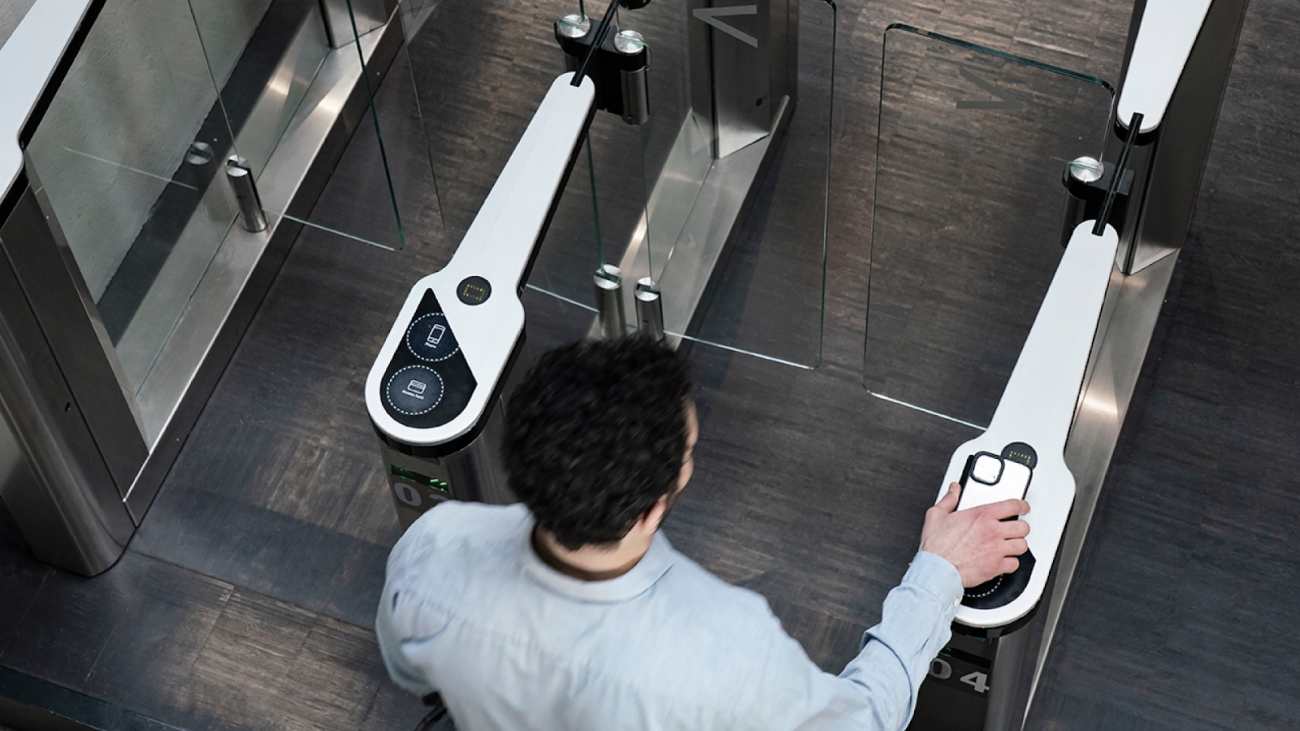The best commercial building security systems are robust, flexible, and add value to properties. Commercial buildings usually have high volumes of people and therefore need a security system that works efficiently and at scale.
Through access control solutions, property managers can determine who gains entry to commercial spaces with authorized credentials. Modern access control solutions offer many more benefits beyond this, such as remote management, streamlined operations, and even increased revenue.
In this blog, we discuss the factors you should consider when choosing a commercial access control solution. This includes ease of installation, maintenance costs, flexibility, and customer service. We also explore the types of technology you should look to deploy, such as cloud-based solutions, video surveillance and intercom systems, alarm systems, and sensor technology. By understanding these elements, you can make an informed decision and select the right access control solution for your commercial building security needs.
Takeaways from this commercial access control guide:
- Qualities to look for
- Relevant building technologies
- Factors to consider during due diligence
- Choosing the right solution
What qualities should you look for in a solution? #
Ease of installation #
It’s worth enquiring about the extent and timeline of deploying a new system or upgrading the one that was in place. If you want to avoid a big construction project, look for systems that support Wiegand technology which allows you to migrate to the cloud, while re-use existing wiring and cables. Also, verify the systems you select are straightforward to configure post-installation.
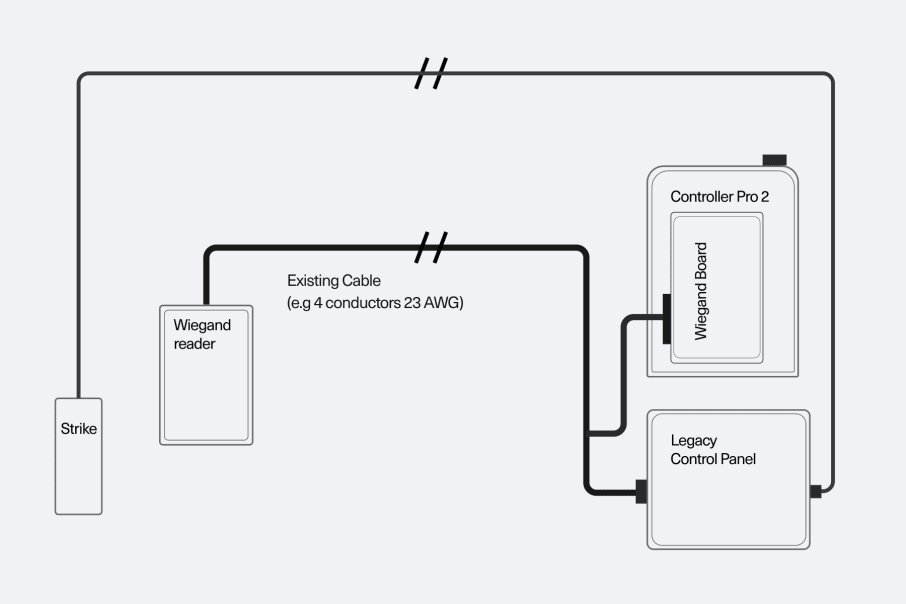
Maintenance costs #
While initial expenses are crucial to consider when planning your budget, it's equally vital to examine the long-term maintenance costs associated with commercial building access and security systems. For on-premise systems, compare the charges for regular maintenance visits and the average cost of software upgrades. If you're using subscription services, review the monthly fees and assess the price disparity when scaling the system or adding customized features.
Flexibility #
A commercial building access control system with limited integration possibilities can hinder its functionality and scalability. On the other hand, a system that seamlessly connects with various hardware and software options provides you with enhanced flexibility to customize and adapt as needed over time.
For example, you might want to integrate your tenant management system with your access control to allow tenants to use their access credentials or mobile devices to gain entry to booked amenities.

Customer service #
Customer support is an integral part of access and security infrastructure investments. You should look for companies with an in-house support team as well as companies that have extensive documentation for any self-service needs that arise. Companies that are unresponsive or sluggish in addressing system bugs can heighten the risk of vulnerabilities and breaches.
What types of technology come into play? #
The best commercial access control solutions harness the latest technologies and are flexible enough to add new capabilities over time.
Here’s how different leading technology like cloud, sensors, and mobile can elevate your access control solution and give you more control over your real estate.
Cloud-based solutions #
Cloud-based access control can be seamlessly integrated with building management systems, video surveillance, and fire alarms, allowing communication between these systems and programmed responses to different situations.
A cloud-based access control system provides centralized management and control without the cost and complexity of traditional physical access systems. You can remotely manage different locations and users from a single pane of glass and unlock doors for vendors, including cleaners, remotely via your mobile.
Video surveillance and intercom #

Cameras in commercial buildings help you monitor office security through video footage and also allow you to communicate over intercom.
Video surveillance should be interoperable with access control systems. When combined, access control and video surveillance create a comprehensive security solution by linking real-time video with entry activity. With an integrated system, the camera at the entryway captures and shares access event footage in near real-time, enabling security teams to respond promptly and effectively.
For intercom, tenant routing can provide several benefits, including flexibility, scalability, and cost savings. It allows tenants to have their own phone system, giving them autonomy and control over their voice communication needs. It also simplifies the management of voice communication services for property managers, as each tenant can manage their phone system and configurations.
Alarm systems #
Alarm systems serve as a powerful deterrent against criminal activity and provide timely notifications to security personnel in the event of a breach. These alarms can be seamlessly connected to an access control system and activated by specific events on the property.
When discussing office security, the most effective commercial alarm systems for intrusion detection are those that go beyond mere identification of unauthorized access and proceed to notify authorities.
By integrating alarm and access control systems, security teams can monitor access activity alongside alarm status and set up automations to minimize false alarms and enhance response time. In larger buildings and enterprise organizations, integrated business security alarm systems enable comprehensive automation throughout the entire operation, resulting in increased return on investment.
Sensor technology #
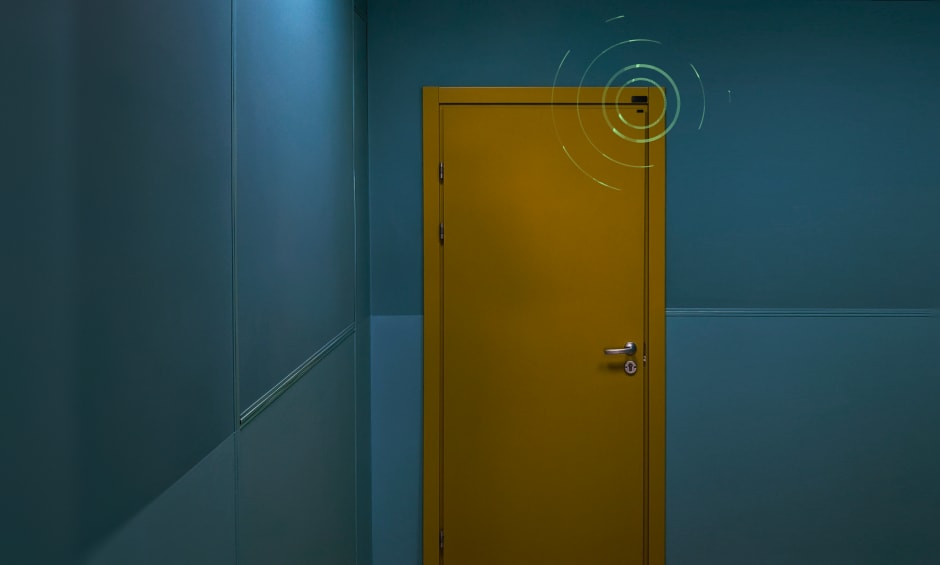
As IoT expands to commercial buildings, businesses can automate, streamline and control their facilities using sensor technology.
Door contact sensors can be installed to notify businesses when a door is forced open or left ajar. Window sensors can be set up in the same way to prevent break-ins.
Occupancy sensors are often found on the ceiling, mounted in a distributed pattern to measure occupancy and vacancy. Motion sensors are used to trigger the door to unlock when you approach it from inside an office. To be able to unlock a door from the inside is a critical security requirement for emergency procedures. In addition to regular motion sensors, there are also Infrared (IR) beam detectors for in-and-out tracking.
Smoke and fire sensors provide fire alerts across the facility. Commercial fire alarms should be connected to the access control solution so that in an emergency, the main doors unlock so people can run out, but security-sensitive doors like the IT room door stay locked. Carbon monoxide detection is also integrated into the regular fire alarm sensor for many commercial applications.
Mobile-enabled access #
To avoid the security risks, admin stress, and cost of people sharing or losing physical credentials, commercial building security systems can use smartphone-based technology for access control.
Coworking businesses have been giving their users flexible, on-demand access control via smartphones for a while now, and commercial real estate businesses are now doing the same. The smooth access experience increases property value and creates a new way to market competitively.
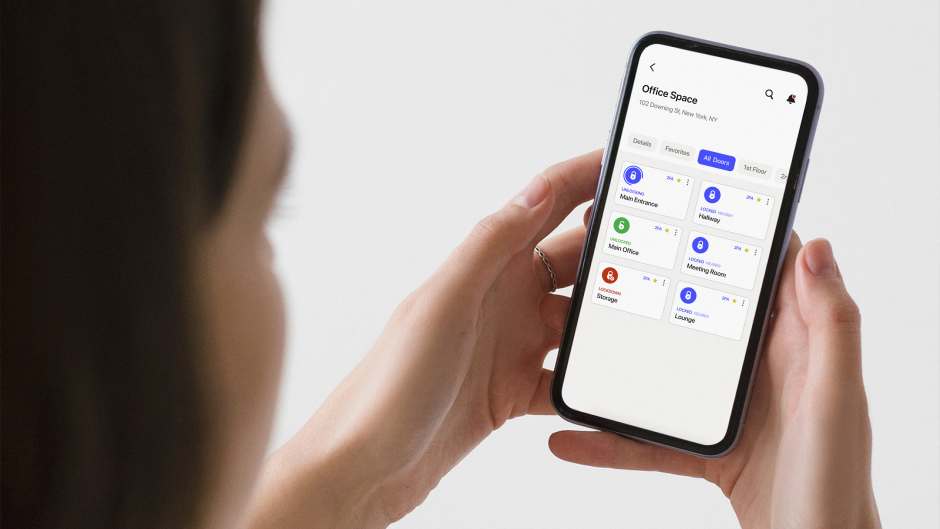
Access control via Apple Wallet is simplifying the mobile access experience. Contactless access to the space can be provided through a credential in the Apple Wallet, so no physical cards are necessary. When a digital credential like a corporate badge sits in Apple Wallet, there’s no need to open an app, like how Apple Pay works. You just hold your phone or smartwatch to the NFC wall reader, and it works magically. Even if your device runs out of battery, the credentials can work for up to four hours because near-field communication uses minimal battery power being able to utilize backup power provided by iPhones.
Doing due diligence #
When choosing a commercial access control solution, looking at technology review websites like Capterra, TechRadar, Crozdesk, Software Advice, and G2 can be incredibly helpful. These platforms provide reviews and ratings from actual users, which can give you a better understanding of the strengths and weaknesses of different providers.
Visit each review website and search for reviews of any providers you are considering. Pay attention to the overall rating, number of reviews, and the specifics of what users liked and didn't like. A high number of positive reviews can indicate a reliable and popular product. Look for feedback on the ease of use, functionality, reliability, and customer support.
You should also look for patterns in the reviews, such as common complaints or recurring praise. This can help you get a better idea of the solution’s strengths and weaknesses, and whether or not they would be a good fit for your business.
Choosing the right access control solution for your business #
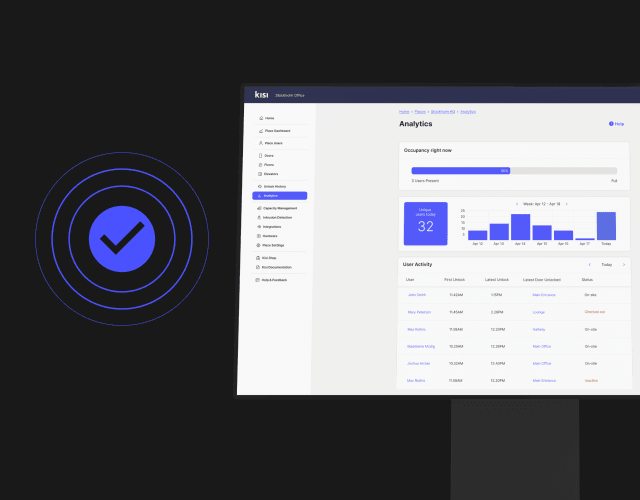
It's important to note that the best commercial building access control solution may vary depending on the specific requirements and needs of a particular commercial building. You should evaluate multiple providers and their solutions to determine which one is the best fit for your specific requirements.
It’s also worth noting that deploying a new access control solution doesn’t necessarily mean you have to invest a lot of money upfront to replace all your existing systems. Cloud-based access control solutions can be retrofitted over existing access control systems for a simple migration with minimal upfront costs.

Rebekah May
Rebekah May is on a mission to increase awareness about the benefits of physical access control, and create safer spaces around the world.



